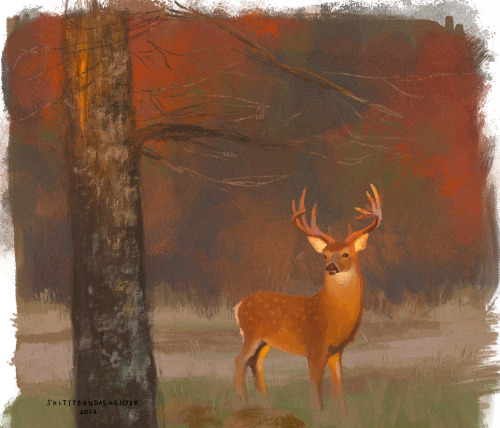
takodanakin
91 posts
Latest Posts by takodanakin





New Obsession: Drowning at Sea

“He who admires art in its technical perfection must respect Liszt. He who is charmed by God-given genius must respect him all the more.”
—descriptions of Liszt from his contemporary and friend, Hans Christian Andersen
(1840)









lavender fields :)



I did some 1hr studies and combined them with how Cumberland Forest would look like in October

Century
15th
16th
17th
18th
19th
20th
Art movement
academic art
art nouveau
baroque
classicism
cubism
dadaism
expressionism
fauvism
impressionism
neo-classicism
post-impressionism
pre-raphaelism
primitivism
realism
renaissance
rococo
romanticism
surrealism
symbolism
ukiyo-e
Continent
asia
europe
latin america
middle east
oceania
us & canada
Themes and motifs
animals
architecture
biblical figures
fantasy
greek myth
historical figures
interiors
landscapes
literary characters
mythology
nature
norse myth
portraits
roman myth
society/people
the moon
the sea/ocean
the sky
urban/cityscapes
war
Genre
abstract
animal painting
cityscape
genre painting
history painting
landscape
portrait
seascape
self-portrait
still life


Beethoven Masterpost
Suggested to me via anon messaging, I think this is a good idea to share some Beethoven with people who don’t know where to start, or anyone who already likes my blog posts and wants to read my little write ups. So, here are all of the Beethoven posts I have made on my blog so far. Each time I write a new post, I’ll make sure to add it to the list.
Orchestral Music
Symphonies
No. 1 in C Major
No. 2 in D Major
No. 3 in Eb Major, “Eroica”
No. 4 in Bb Major
No. 5 in c minor
No. 6 in F Major, “Pastoral”
No. 7 in A Major
No. 8 in F Major
No. 9 in d minor
Concertos
Choral Fantasy
Piano Concerto no. 1 in C Major
Piano Concerto no. 3 in c minor
Piano Concerto no. 4 in G Major
Piano Concerto no. 5 in Eb Major “Emperor”
Chamber Music
Cello Sonatas
No. 3 in A Major
Piano Trios
No. 4 in Bb Major, “Gassenhauer”
Transcription of Symphony no.2 in D Major
String Quartets
No. 1 in F Major
No. 7 in F Major, “Razumovsky 1″
No. 11 in f minor, “Serioso”
Violin Sonatas
No. 5 in F Major, “Spring”
No. 6 in A Major
Solo Piano Music
Piano Sonatas
No. 1 in f minor
No. 2 in A Major
No. 3 in C Major
No. 4 in Eb Major
No. 6 in F Major
No. 7 in D Major
No. 8 in c minor, “Pathetique”
No. 12 in Ab Major, “Funeral March”
No. 13 in Eb Major, “Quasi una Fantasia”
No. 14 in c# minor, “Quasi una Fantasia”, “Moonlight”
No. 15 in D Major, “Pastorale”
No. 17 in d minor, “The Tempest”
No. 19 in g minor
No. 21 in C Major, “Waldstein”
No. 23 in f minor, “Appassionata”
No. 25 in G Major, “Cuckoo”
No. 27 in e minor
No. 29 in Bb Major, “Hammerklavier”
No. 30 in E Major
No. 32 in c minor
Variations
Diabelli Variations
The immortal words...

Written and Directed by Quentin Tarantino






Beethoven - Symphony no. 9 in d minor
The symphony to end all symphonies. Or at least, that was the general view shortly after its premiere. The towering name of Beethoven and this immortal work made a lot of composers feel that it was the pinnacle of the form. At least in that way it inspired new models for expression. The 9th [and this particular 9th symphony is so famous, it goes by this nickname] is an accumulation of Beethoven’s symphonic writing, starting out with one tone, the work builds out from silence. The first movement is a constant flow of drama, full of strange dissonances. The second movement is a stormy scherzo with a typical lighter section to contrast it. The third movement is a smoother set of loose variations. The fourth movement, the one most talked about, is a bizarre “symphony-within-a-symphony”, and can be divided into it’s own “four movements”: a) Slow introduction with theme and variations, b) a “Turkish March” begining with the words “Froh, wie seine Sonnen fliegen”, c) a meditation starting with “Seid umschlungen, Millionen!”, and d) a fugato finale built out of themes from the first and second movements. With this structure in mind, it’s important to point out that, throughout Beethoven’s career, he changed the way how multi movement music was thought of. Instead of a short set of movements in related keys, these pieces had movements that were integral to each other, balancing each other out, necessary to the work. Here, he thematically unifies all the movements by tying them together with the last movement. And of course, what makes this piece famous, there is the chorus. After shocking and thunderous dissonances, we hear a voice, “Oh friends, not these tones!” a call for harmony and brother/sisterhood. A hymn to mankind, an ode to joy. The famous Ode to Joy melody had been with Beethoven for a long time. The earliest sketch of the shape of the melody was found written around the same time as his third symphony was being written. And the earliest version of this melody was used in his Choral Fantasy. It was a successful premiere, despite how underrehearsed the orchestra was. If Beethoven saw himself as Prometheus, liberating mankind with a new musical language, this symphony is a testament of his achievement.
Movements:
1. Allegro ma non troppo
2. Scherzo: Molto vivace
3. Adagio molto e cantabile
4. Reactive…







Interiors | Amadeus 1984









Misery (1990)


Marie Antoinette (2006) dir. Sofia Coppola

roaring 20s // panic! at the disco








lit covers | The Great Gatsby
“Angry, and half in love with her, and tremendously sorry, I turned away.”

music to watch boys to (2015)
the moment you sob
these songs you've listened to for years
the little points that you love
the harmonies and notes collide
the vocalities intertwine in the emotion
after many years, you finally experience,
you experience these tracks
live in the blossoming world
the lights and the color,

finally


No offense but Lorde started Pure Heroine with “Don’t you think that it’s boring how people talk?” and ended it with “Let em talk” and I think that’s beautiful

fallingforyou //

Moonlight Sonata









A cello appreciation mood board for @lawseye -Admin Paint


sorry / halsey
WHEN I HAVE TIGER BUTTERFLIES, YOU WANT MONARCH. WHEN I HAVE MONARCH, BUTTERFLIES YOU WANT TIGER. YALL JUST GONNA HAVE TO DEAL WITH THE BUGS I HAVE










Lana Del Rey // Honeymoon (2015)


End of an era “Honeymoon”

Lana Del Rey by Neil Krug for ‘Honeymoon’ photoshoot – 2015









// L O V E M E //









Cover Art - The 1975
don’t repost without credits please





Lana Del Rey + her discography (insp.)